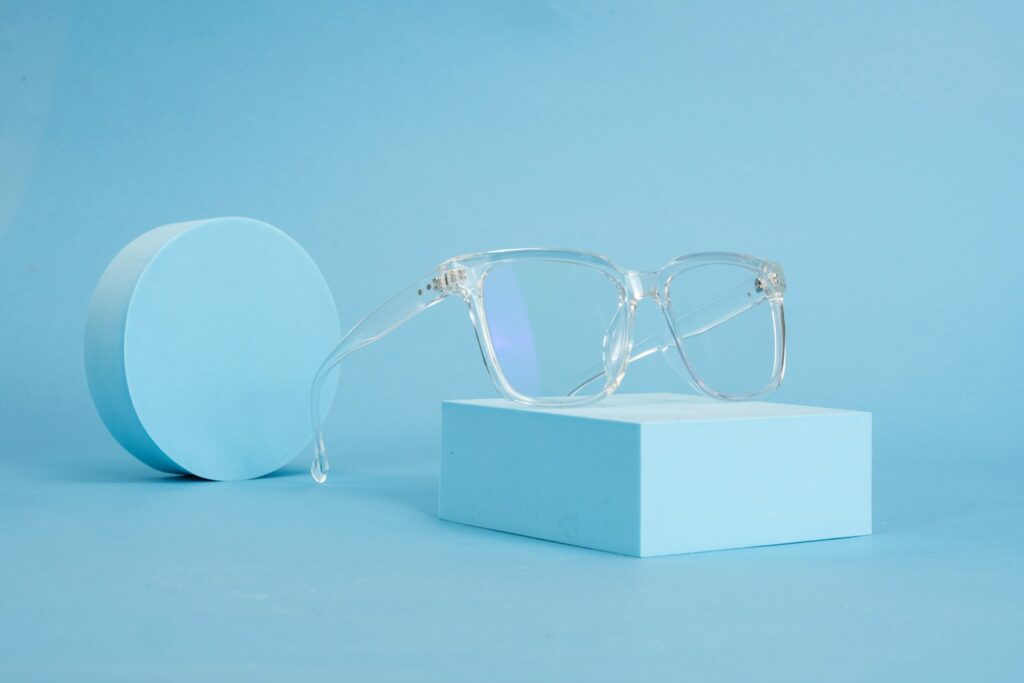Meta has made a significant move forward in the world of smart glasses. Their latest Meta Smart Glasses, which are now called Meta Ray-Ban Smart Glasses, allow for more than just wearable tech—they’re becoming a way to engage with the world. And the most unbelievable part? They can now do things without you physically touching them or saying a word. You read that right. No hands. No voice commands. Just unvoiced and seamless control.
In the past, smart glasses always featured some sort of touchpad on the frame or the ability to issue voice commands. You would tap the arm or say a phrase like, “Hey Meta,” to take a picture, play some music, or call a friend; but now, Meta’s new touch-free smart glasses are flip-flopping the usability of the words “smart glasses.” The technology has recently been phenomenal! Through an individual inconspicuously moving their head and eyes, the glasses can detect what you want to do as well as move your body to where you want to look.
This type of smart glasses usage feels more fluid. There is no need to pause what you’re doing or say something noisily in public. The glasses are working quietly with your body, almost reading your mind. This is just the beginning.
So, let’s take a look at what the new Meta Smart Glass can do, how it works, and why it is more important than ever.
Hands-Free, Voice-Free: How It Works
So how does Meta Smart Glasses know what you want without touching or talking to them?
Meta is using a combination of eye movement tracking and gentle finger gestures. These small motions are done so subtly that others around you will hardly notice. But the glasses won’t miss them!
Eye tracking
The glasses can track where you are looking. If you see a certain icon in your viewing area and happen to look over at it, they know you are interested. Look at it for a little longer, and it will open. That’s it. No need for a click. It’s like pointing with your eyes.
Pinch and flick gestures
While the overall controls do not require a full touchpad, Meta is enabling some limited light finger gestures. For example:
-
You can pinch something with your thumb and forefinger to select it.
-
You can flick with your fingers to scroll.
-
You can hold a pinch for a second to confirm something.
These gestures can be done in the air, next to your body, or against your clothing. They are natural and easy to master.
The glasses also come with a little wearable device—a ring or wrist sensor—that picks up these movements.
What You Can Do With Meta Smart Glasses Now
The new Meta Smart Glasses come with an impressive set of features that go well beyond recording video and playing music. Here’s what they can do with only your gaze and a few subtle gestures.
1. Take pictures and videos
Want to capture a moment? Simply look at your subject and do a quick pinch gesture. The glasses take the picture immediately. No tapping the frame. No commands. You’re present in the moment.
2. Read and transcribe text
The glasses can scan written text and magically transcribe it into a new language in real-time. Look at a street sign, a menu, or a magazine and it will show the translation just in front of your eyes. You can toggle this on and off with a simple gesture.
3. Playing and pausing music
You can stream music or listen to a podcast and pause or play it, simply by moving your hand in front of you. Use a forward or back swipe to skip tracks. Very easy! No need to take out your phone or say a word.
4. Navigating
The glasses can also give you walking navigation directions with visual cues. You will see a soft glow or arrow that guides you where to go. If you want to change your route, just look at the option you want and confirm it with a pinch.
5. Notifications and calls
You will receive notifications and call alerts directly to the lenses. With a look and gesture, you can answer and dismiss. Plus, you don’t have to stop what you’re doing or take out your phone to do it.
All of this happens silently and seamlessly. The aim is to keep your hands and voice free for whatever else you are doing—walking, working, or talking to someone face to face.
Why This Matters: The Future of Wearable Tech
The shift away from touch and voice is significant. It’s not simply a cool feature, it’s indicative of what is possible in the future. Meta doesn’t just want to push smart glasses to more natural, human, integration.
Here is why it matters:
Less awkward
For many people, talking to glasses in public feels awkward. With this new system, you won’t have to talk at all. It’s quite private and quite polite.
More functional
You can still use your glasses even when your hands are busy cooking, biking, shopping, etc. Instead of speaking or requiring a finger, these glasses respond to your small movement with hands-free recognition.
Faster execution
Eye-tracking and gestures feel quicker than speaking or tapping. It’s almost like your thoughts are now actions.
Better battery life
The glasses can run far less power without having to listen for voice commands or respond to touch.
All of these changes create a smart, yet functional not-a-gadget tool to fit our real life. Whether you are a traveler, student, or just someone who loves using the world to stay connect, these glasses open up an entire level of convenience.
Privacy and Safety: What Meta Is Doing Right
Naturally, new technology raises new concerns. What happens to your privacy when glasses can track your eyes and detect gestures?
According to Meta, they took the issues surrounding privacy into account. The glasses were designed to keep most of the information on the glasses themselves and not upload anything to the cloud. That means your eye movement and your gestures are kept private.
Users also have complete control over which features are on and which features are not. You can turn off the ‘eye-tracking’ feature or the ‘gesture’ features any time you would like. Also, there are lights on the frame that announce to other individuals that you are recording. That provides a little more privacy in public.
Meta has implemented more safety features, like allowing users to limit face recognition and providing more clear signals when the device is taking a photo or video.
While these are good first steps, users need to remain aware and cautious. The more powerful the Meta Smart Glasses becomes, the more we all have to think about where our data is uploaded to and who obtains it as well.
What Comes Next for Meta Smart Glasses
Meta has just begun on this journey. They are constantly looking to improve upon their Smart Glasses and with this first version we have seen so far is only the beginning.
Here’s what you can expect next:
Enhanced Social Experiences
Imagine being at a concert and sharing what you are seeing with your friends instantly, without even taking your phone out.
Health & Fitness Features
Your glasses could track your workouts, monitor your posture or health metrics, and provide gentle nudges throughout the day.
Improved Camera and Audio
With each generation of glasses, look for better lenses, improved microphones and louder sound—without adding unnecessary bulk.
App Store for Glasses
Eventually, you might not only be able to download apps for your glasses, but developers will also build custom apps just for Meta Smart Glasses. Which means there will be even more tools and games available.
Meta is not far off from adding the look of a fashionable accessory to the functionality of a smart device. These are beginning to look less like a tech toy and more like a digital assistant we will use routinely.
Final Thoughts: A New Way to See the World
Meta smart glasses no longer act solely as a calling device or music player. Instead, they are blossoming into something more—something that can identify your movement, your focus, your needs without stopping you to talk or press buttons.
This hands-free, voice-free technology may seem minor, but it is a monumental step forward as it makes technology feel more natural and more personal; it allows you to stay connected without constantly checking your device.
Meta smart glasses show that the best technology is technology that you can barely notice—yet can’t live without, as we move into a future full of smart devices.



